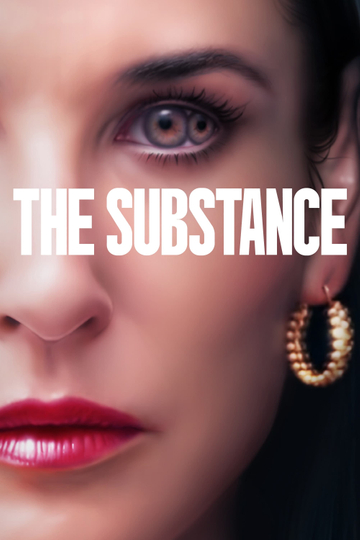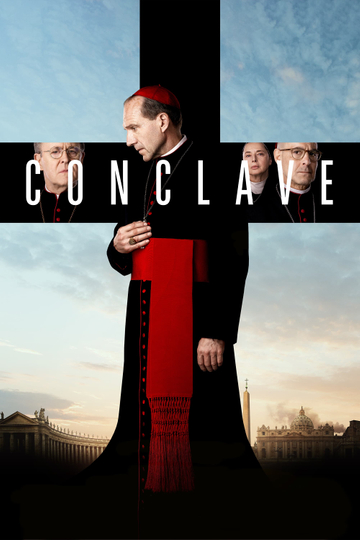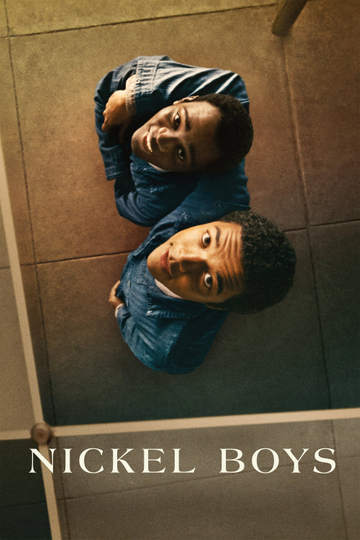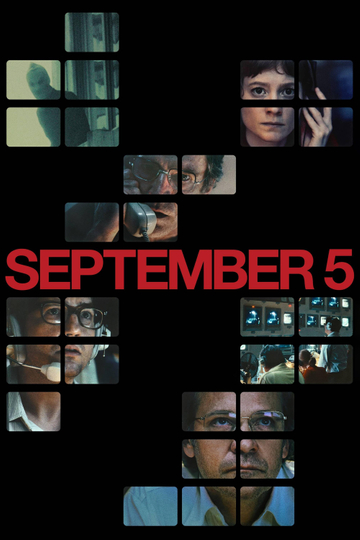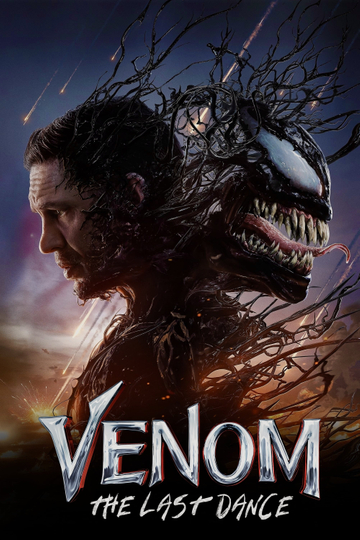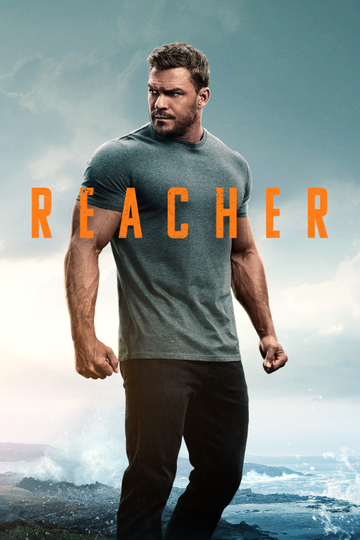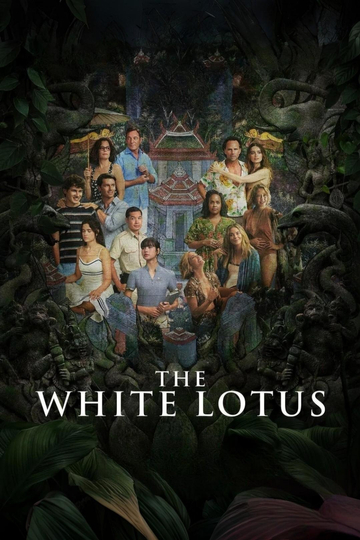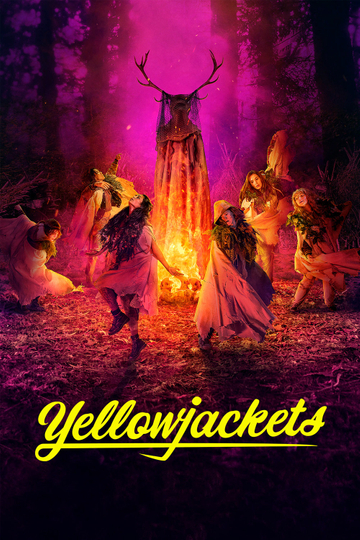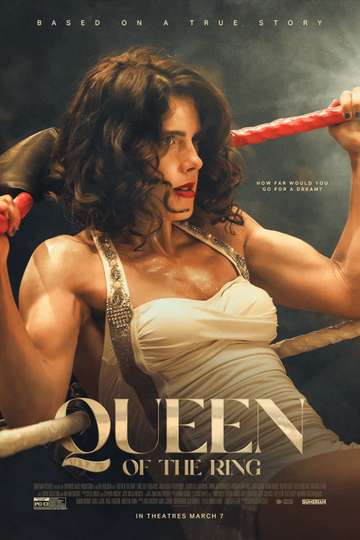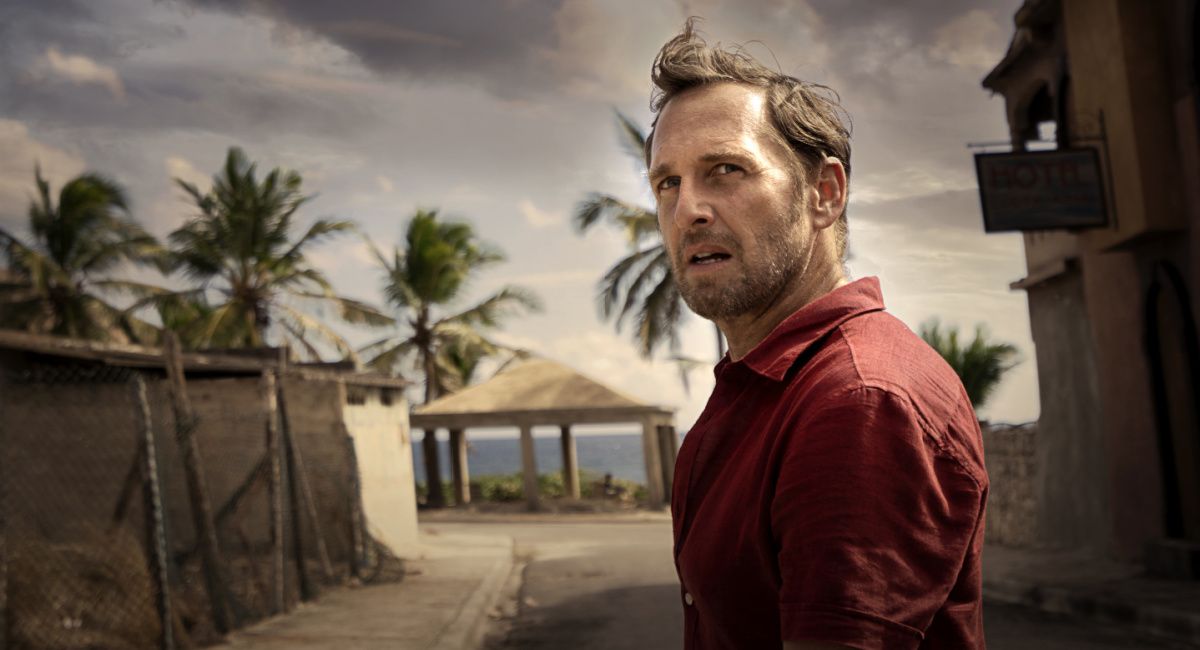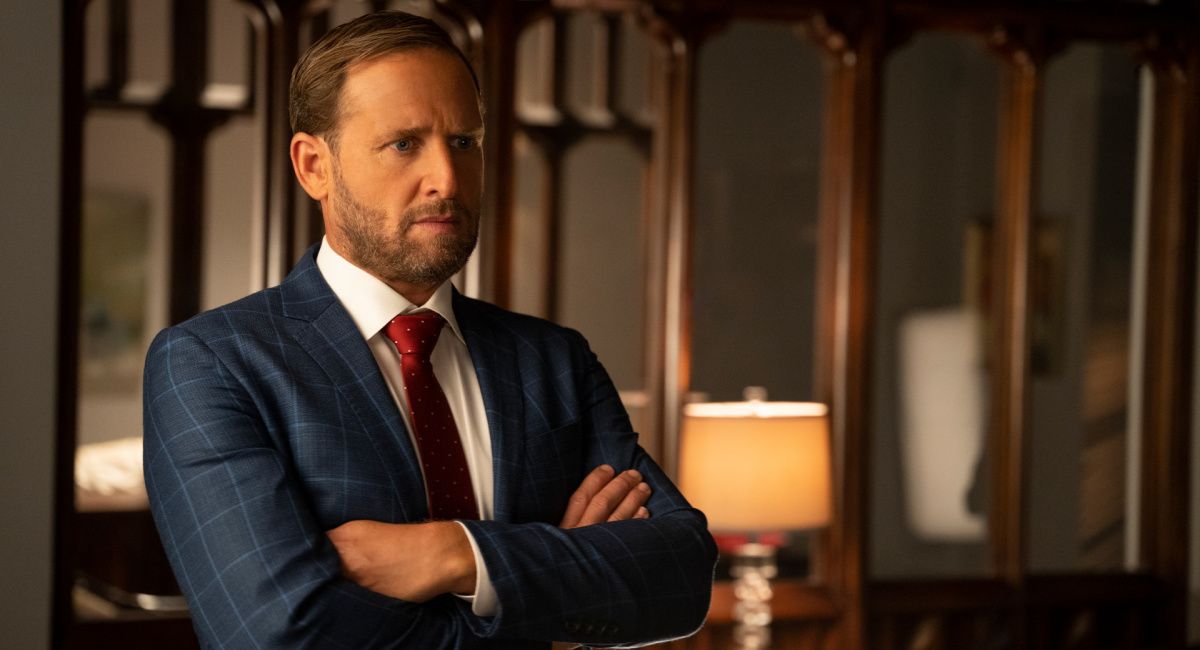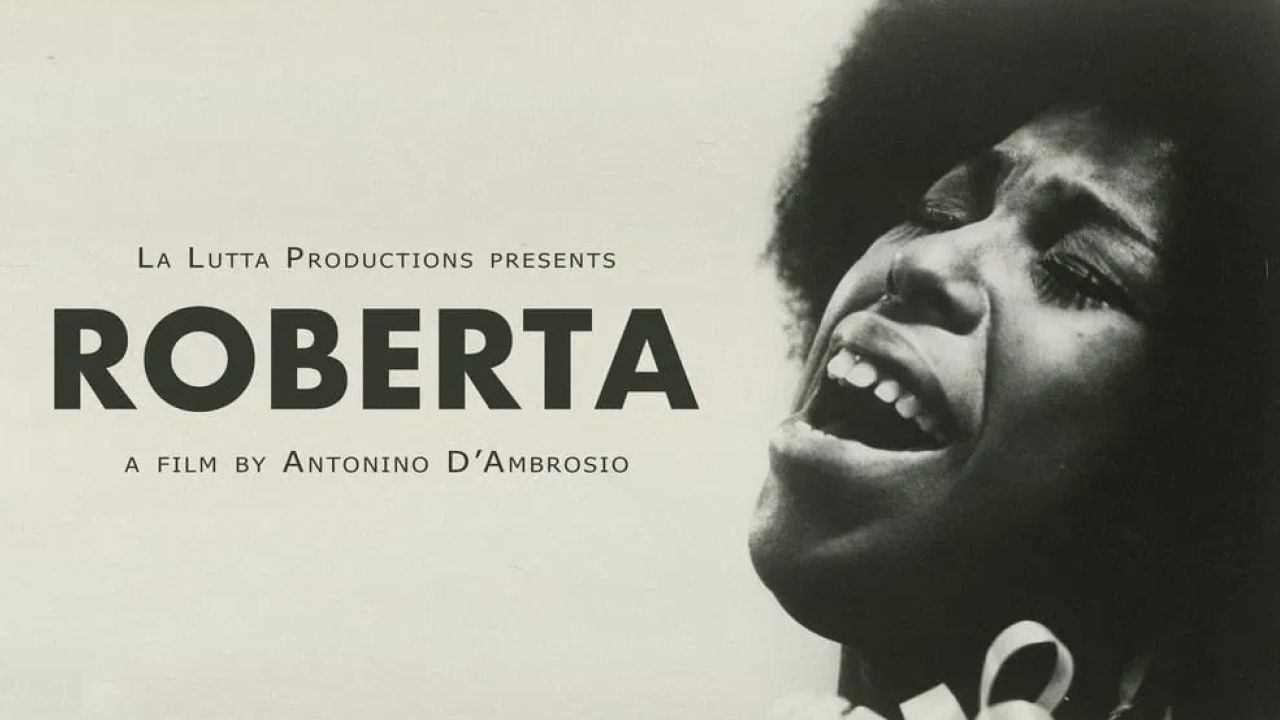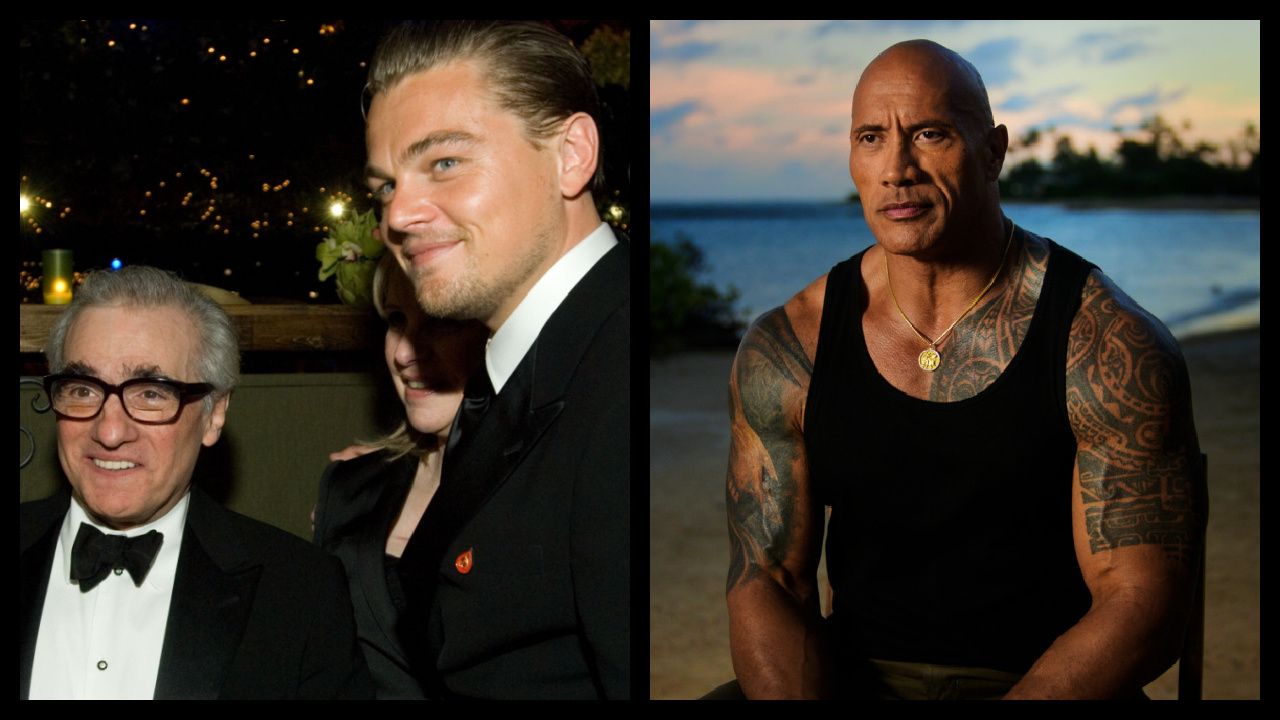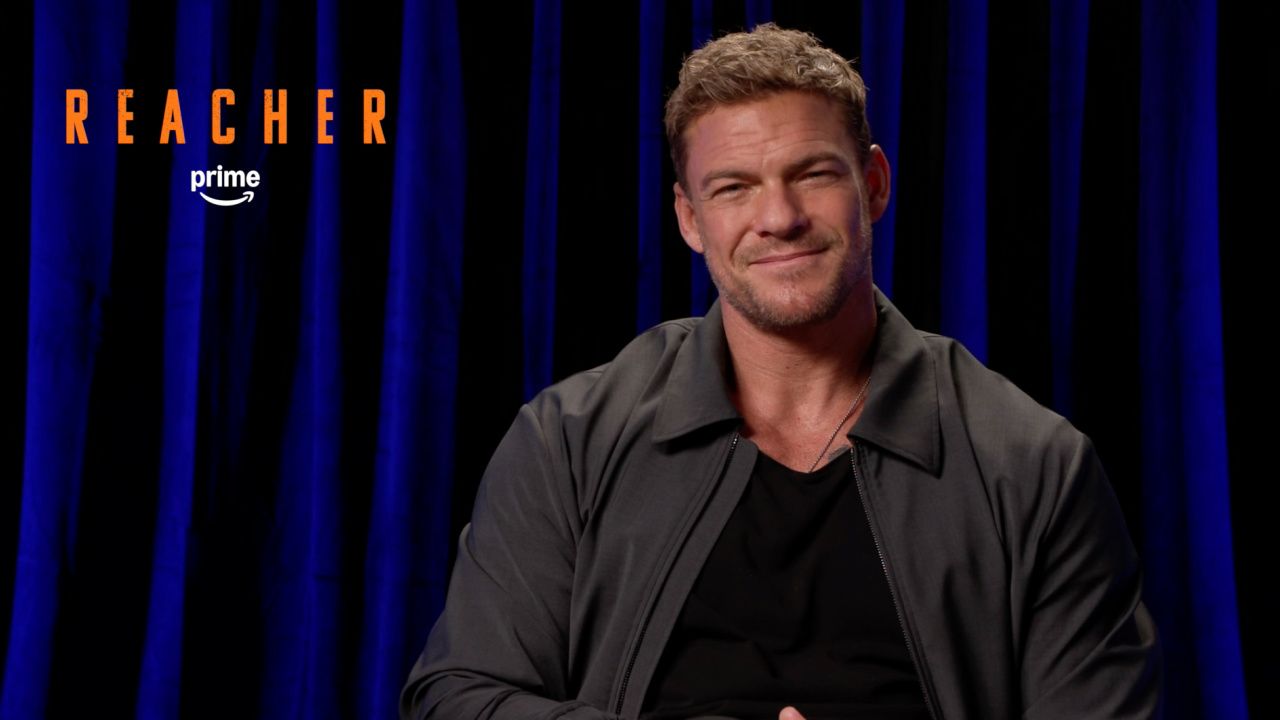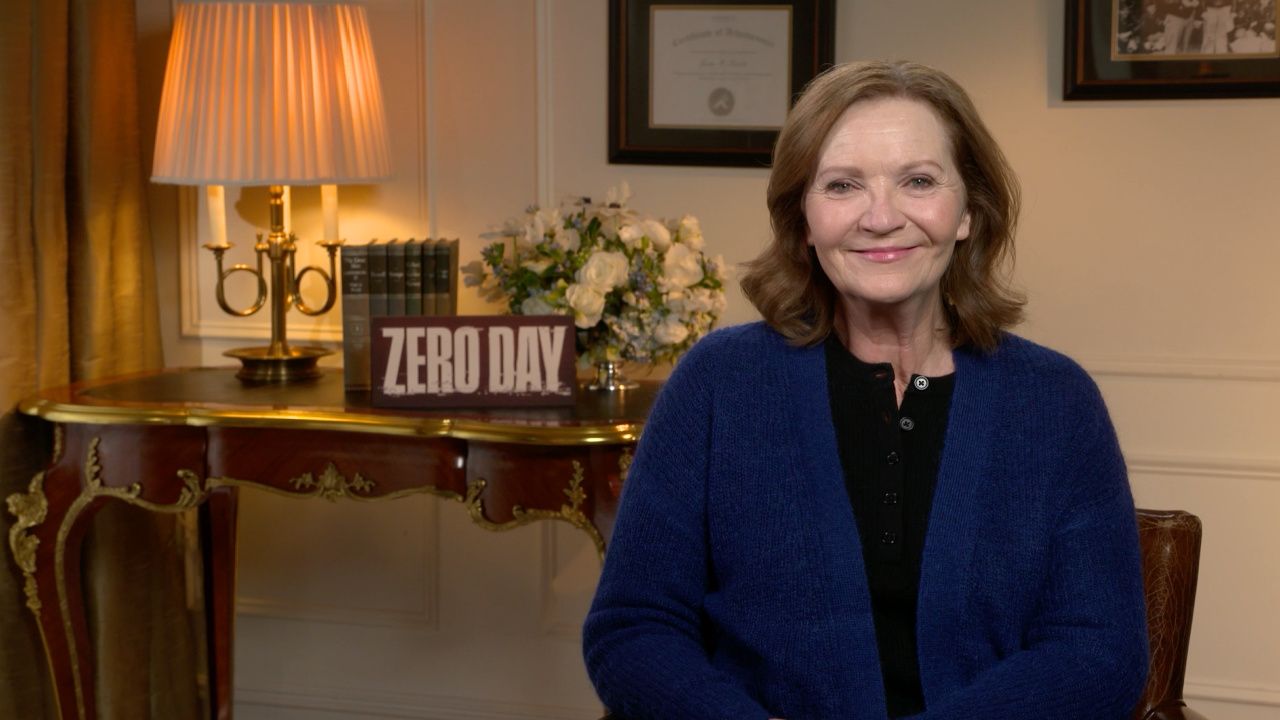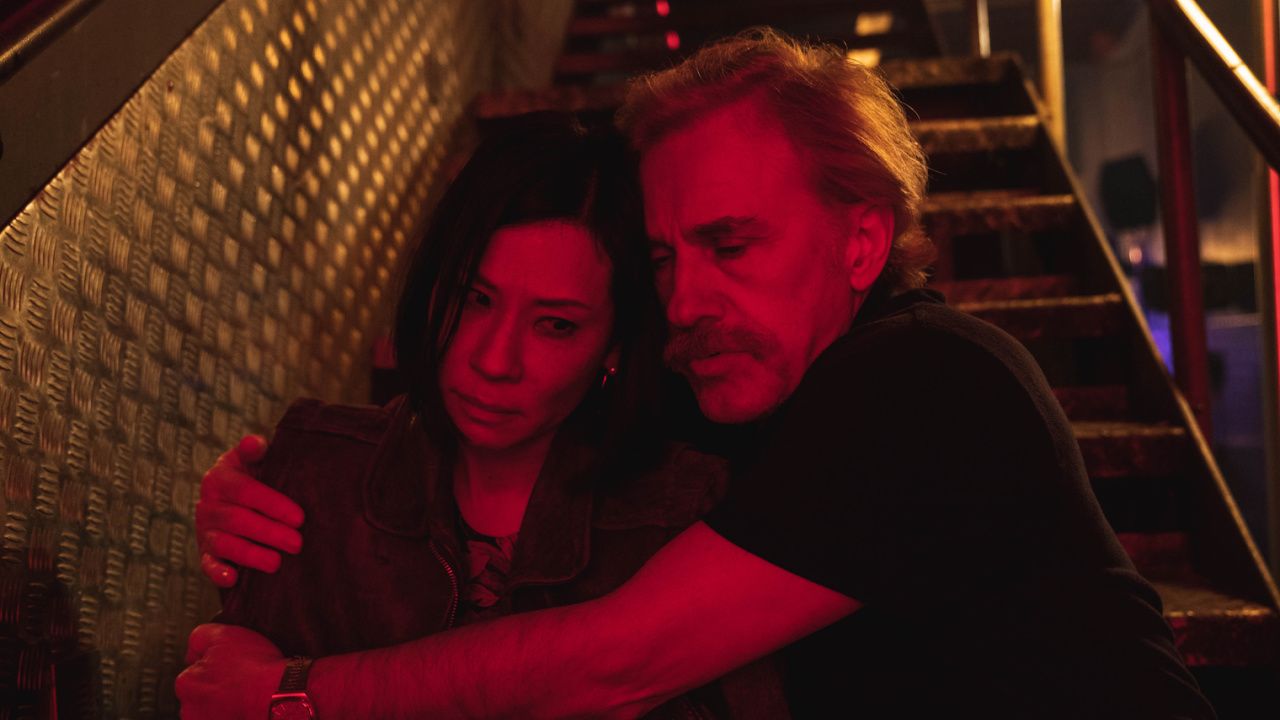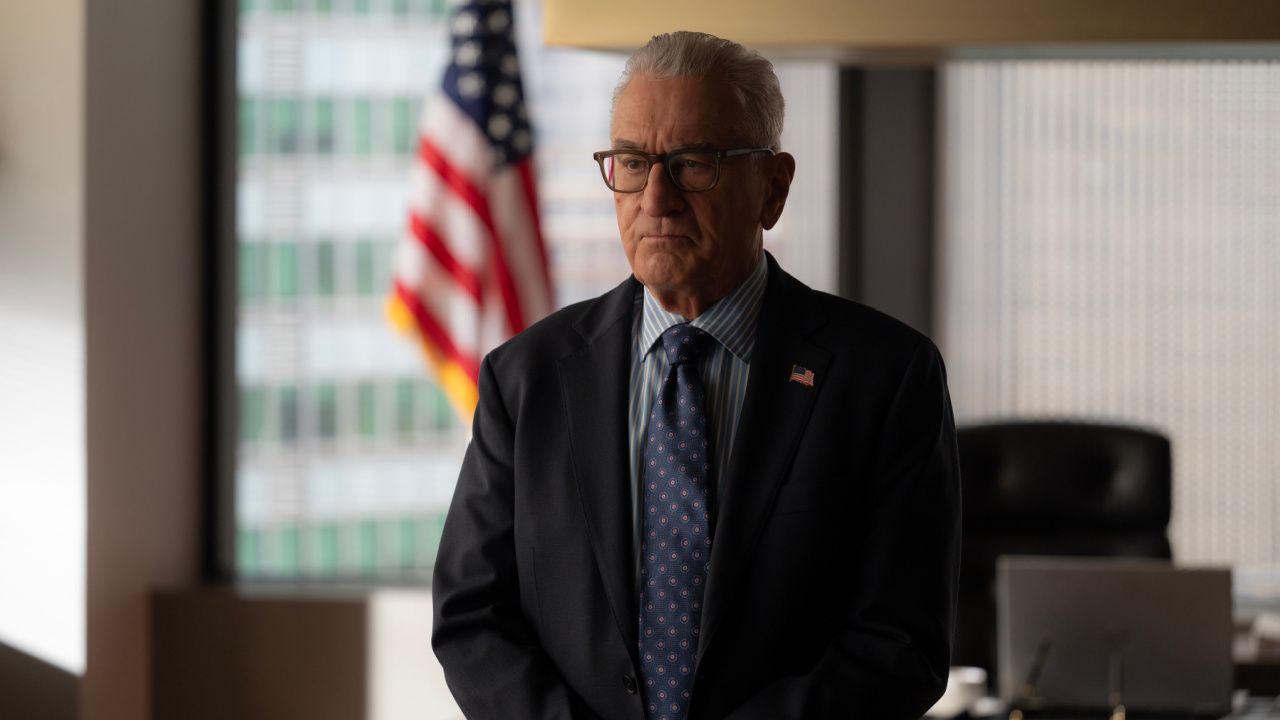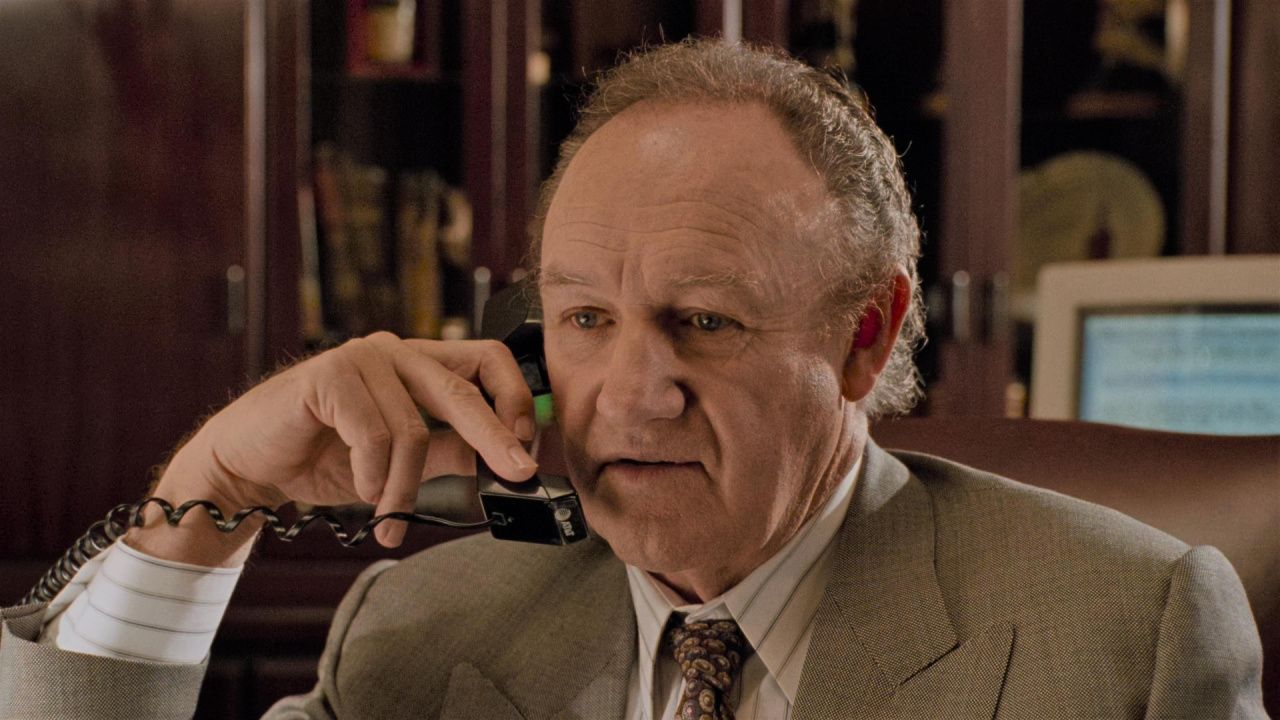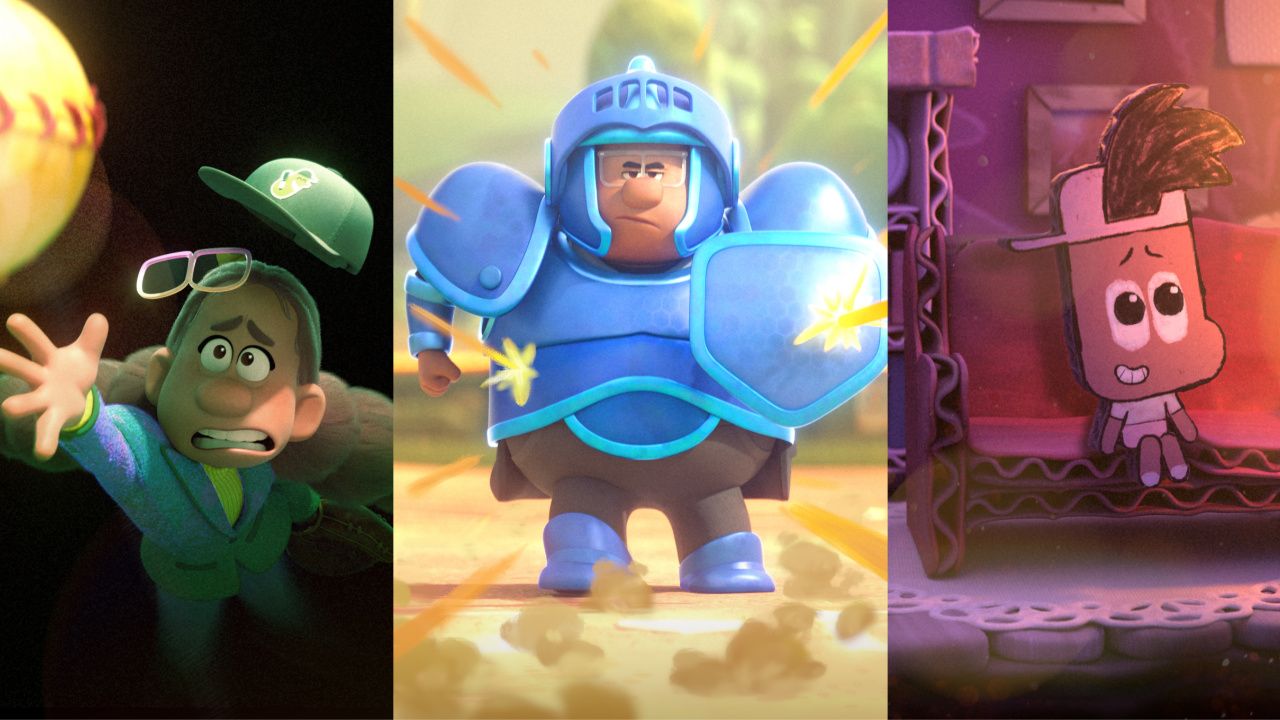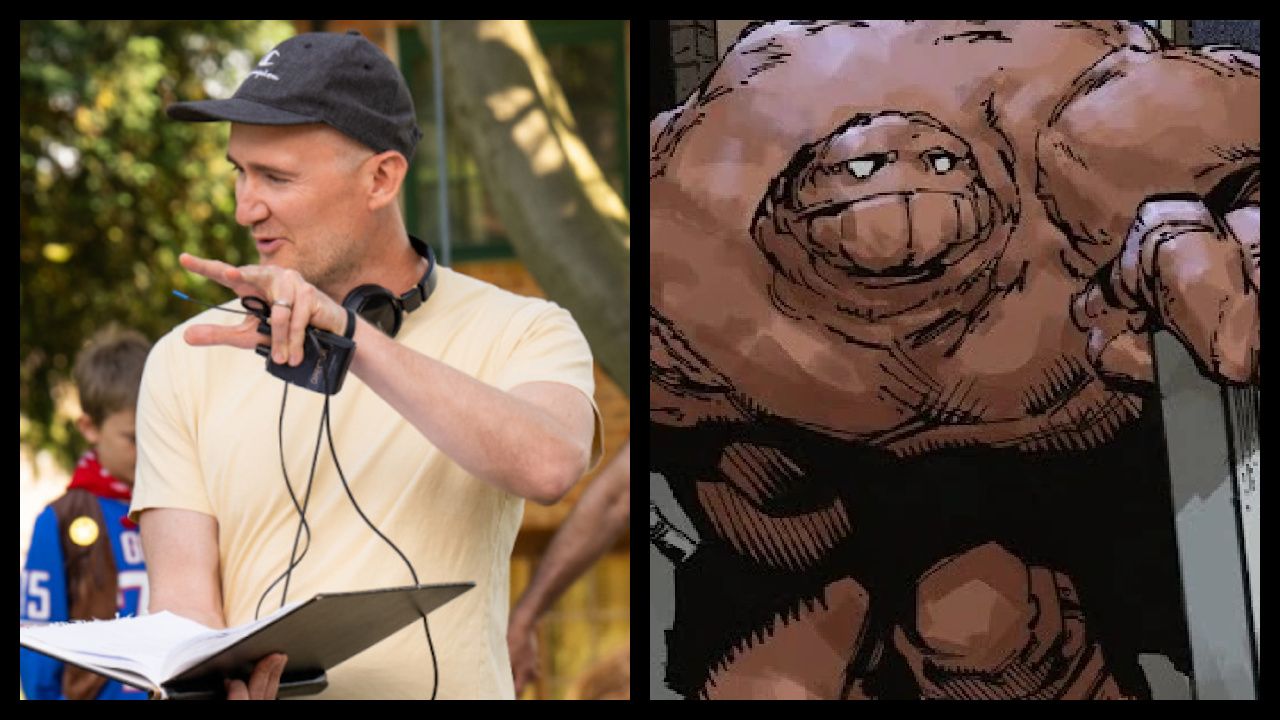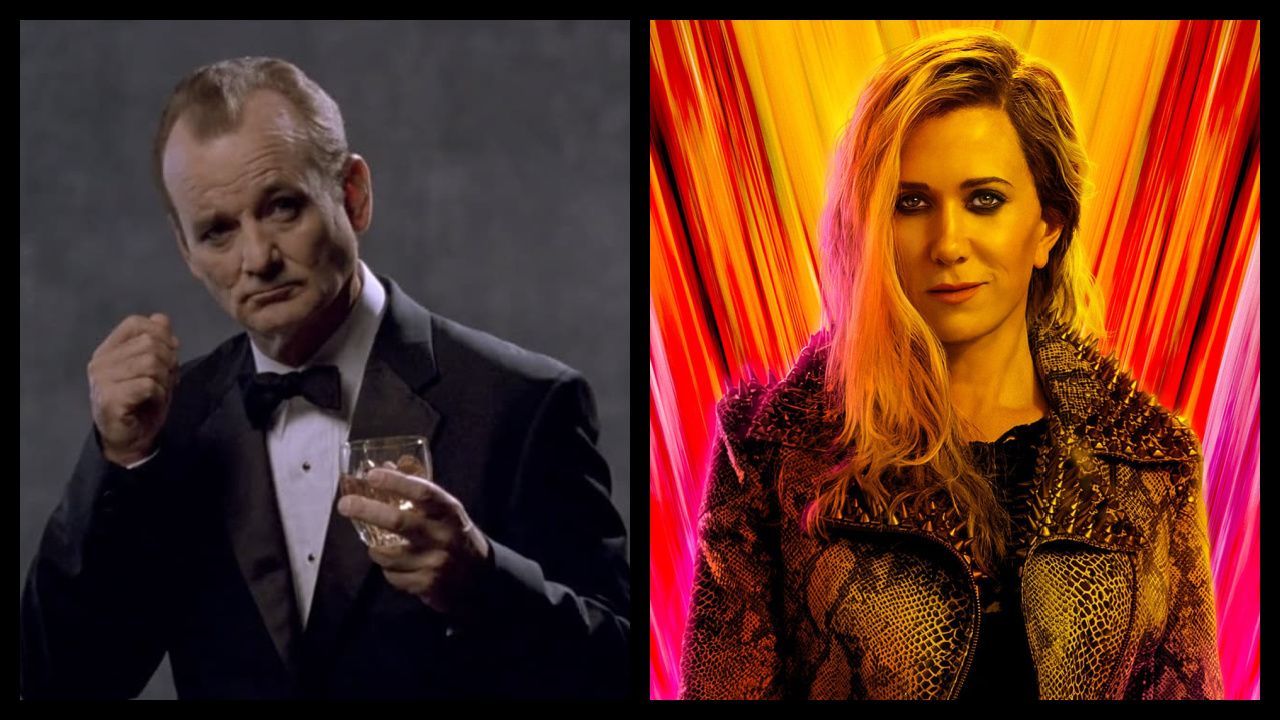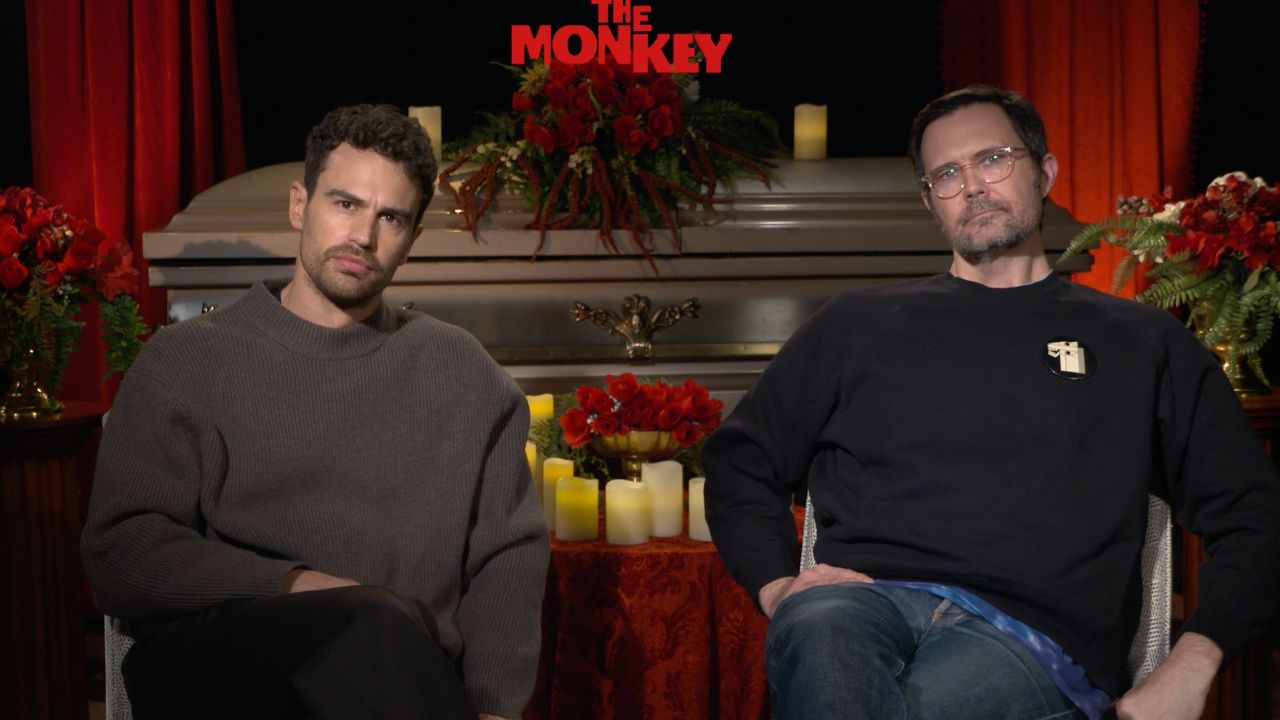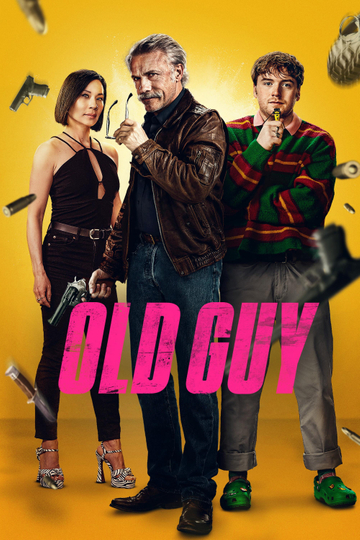Emily Bett Rickards and Director Ash Avildsen Talk 'Queen of the Ring'
Moviefone speaks with Emily Bett Rickards and Ash Avildsen about 'Queen of the Ring'. "When I read the script, I was immediately hooked," Rickards said.
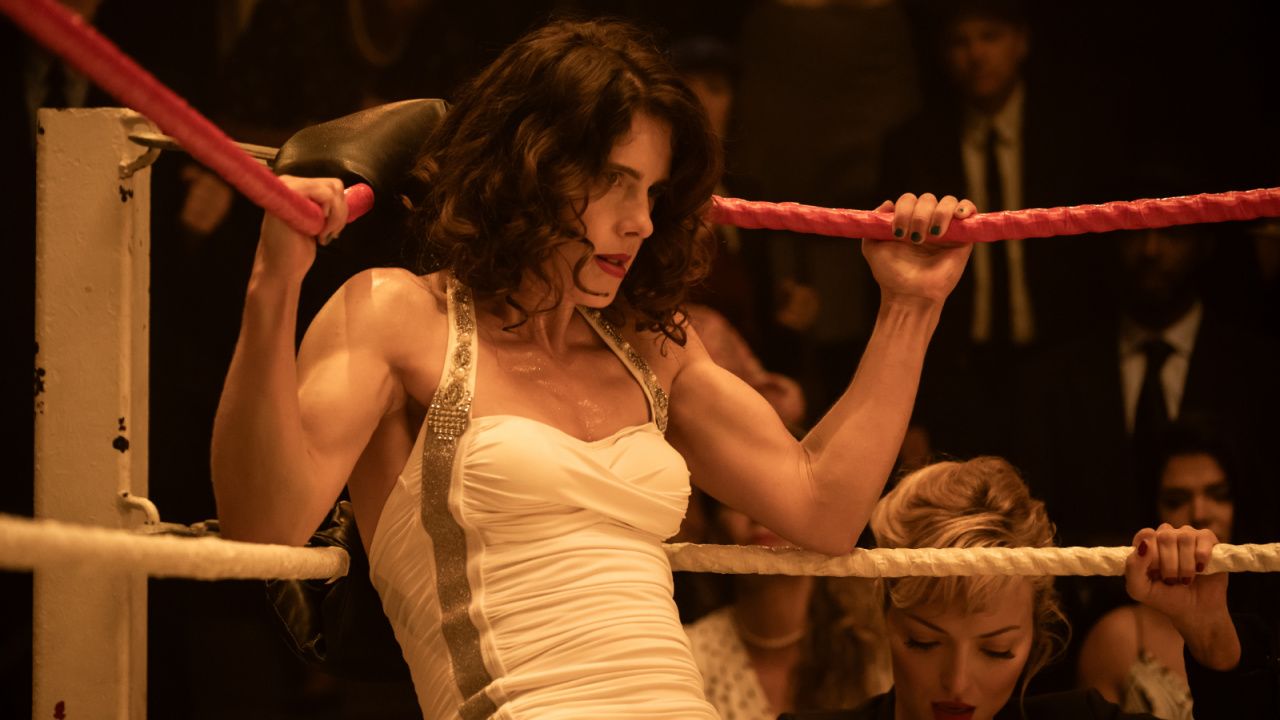
Emily Bett Rickards in 'Queen of the Ring'. Photo: Intrinsic Value Films & TV.
Premiering at the Newport Beach Film Festival on October 19th is the new biographic sports drama ‘Queen of the Ring’, which is based on the book of the same name and tells the inspiring true story of groundbreaking professional wrestler Mildred Burke.
Written and directed by Ash Avidsen (’American Satan’), the film stars Emily Bett Rickards (‘Arrow’) as Burke, as well as Josh Lucas (‘Ford v Ferrari’), Deborah Ann Woll (‘Marvel's Daredevil’), Martin Kove (‘Cobra Kai’), and Walton Goggins (‘Fallout’).
Moviefone recently had the pleasure of speaking with Emily Bett Rickards and filmmaker Ash Avildsen about their work on ‘Queen of the Ring’, developing the screenplay, Rickards’ approach to the character and learning to wrestle, how Avildsen wanted to shoot the wrestling sequences, Mildred’s complex relationship with Billy Wolfe and working with Josh Lucas, Mildred’s importance to the history of wrestling and female athletes, and if Rickards would want to be a “Babyface” or a “Heel” if she were a professional wrestler.
Related Article: Robbie Amell and Stephen Amell Talk Netflix Sequel 'Code 8: Part II'
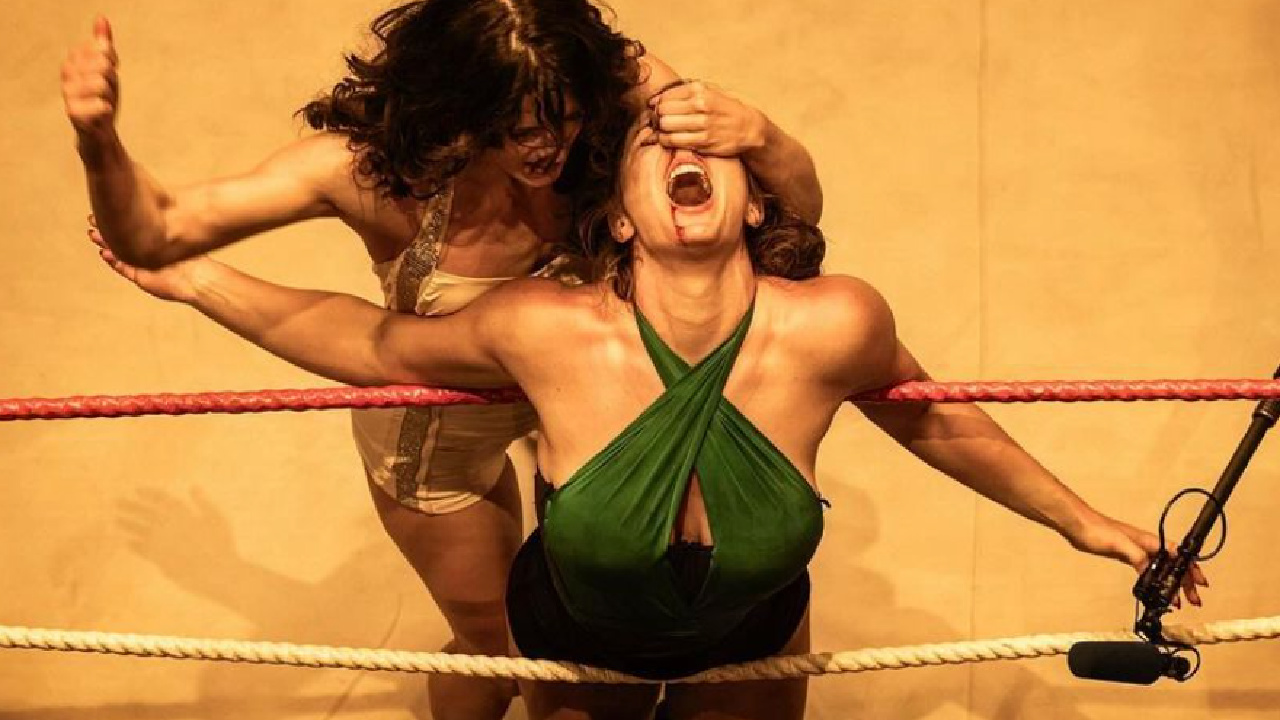
(L to R) Emily Bett Rickards and Kamille in 'Queen of the Ring'. Photo: Intrinsic Value Films & TV.
Moviefone: To begin with, Ash, can you talk about learning of Mildred Burke’s true story, developing the book the movie is based on into a screenplay and the themes that you wanted to explore with this film?
Ash Avildsen: I grew up a huge pro wrestling fan. I never knew about her story. I was planning on telling a fictional 80s story that had a triumphant ending because it didn't really exist in film with pro wrestling. ‘The Wrestler’ was a masterpiece, but it was also a much darker tale. So, I called (executive producer) Jim Ross, I said, "Would you be willing to make kind of a love letter with me to all of the best 80s stories, and we bring it into a fictional world?" He goes, "Yeah, but by the way, have you ever heard of Mildred Burke?" I said, "No, who's that?" He goes, "Read the book, ‘Queen of the Ring’, and let me know what you think." I read it that weekend. I called him on Monday. I said, "Forget about the 80s fictional thing. We have to tell Mildred's story." Because I was just so enamored by it. From there we started developing the script and it's just inspiring and unorthodox. It's really a unique family drama in the world of period women's pro wrestling. I just felt it was a story that I hadn't seen before, and the fact that it was true and that it was kind of forgotten gave me my own chip on my shoulder as a fan of the world. How did we let this get forgotten about it? I just really became emotionally invested into it and then the journey began to try and get it made. Then we got lucky that Emily was interested and available because I can't imagine anyone else. I think people are really going to love her performance.
MF: Emily, what was your first reaction to the screenplay and learning of Mildred’s story, and your approach to playing her?
Emily Bett Rickards: When I first read the script, I was immediately hooked. I had to know more about this woman. I also was so touched that the script was written with such heart as well as in this world of wrestling that I didn't know anything about. So, to have that immediate empathy on the page is sort of what we go to the movies for and what you hope every script will have. It's a delight when you get a gem like that. Then diving deep into her life, there was no turning back. We're lucky enough that there's so many photos of her, which I think are important. She wanted herself to be seen, and you can kind of see the gentrification of who she became in a sense, and who she was driving her persona to become, which as an actor is like candy. It's just such a treat. Then, once we started filming, I don't know, I feel like she's here. It was like she had arrived in a sense. We very much wanted to tell this story in a way that she'd be proud of and would do her story justice. There were moments where I felt like she was with us. So yeah, it was a true honor.

(L to R) Kamille and Emily Bett Rickards in 'Queen of the Ring'. Photo: Intrinsic Value Films & TV.
MF: Emily, can you talk about how you prepared physically for this role and was it difficult learning all the wrestling moves?
EBR: When I arrived in Louisville, I think we had about three weeks of wrestling training, wrestling rehearsals strictly, which pretty much is, get in the ring as much as possible. Learn not only choreography, but be around this wrestling world, which was everybody at OVW (Ohio Valley Wrestling) who sort of took me under their wing, shared their wrestling stories, and their love for wrestling with me, which was also helpful. It wasn't just about what was on the mat, it was about why do we fall in love with this? Why do you personally fall in love with your persona and what that means to you and what is this performance behind the physical aspect of this stage work? Then before that, I was at home in Vancouver and I was training with my trainer Thomas Taylor, as well as Dr. Diego Botezelli, who created a workout and meal plan for me for the rest of the shoot as well as while I was away. So, it was about six months of weightlifting and eating a lot of chicken breast, having chicken at the ready and pumping weights at the ready at any chance I could get.
MF: Ash, can you talk about how professional wrestling was different back then and specifically how you wanted to shoot the wrestling sequences?
AA: So sometimes in other films, they do a great job of going tight in the ring, going handheld, and making it a bit shakier and more stressful, which is a great way of showing the intensity. With ‘Queen of the Ring’, I wanted it to be more kind of showing the beauty of the art form versus the danger of it. We obviously have moments of danger in the ring, especially when they're having shoot matches, but it's such a beautiful art form of storytelling and circus, and it's like this destructive but magical ballet that they're doing, and we wanted that to be seen. So, there's a lot of shots where you can see it a bit more as you'd be seeing it if you were in the audience at the event. That was intentional, especially because we had actors and wrestlers that had so committed to it that we were going to be able to pull off the moves and the stunts and have them look great, which that's kind of the big thing for the pro wrestling community. Is it going to be authentic? Do they know what they're doing? I think we, thankfully, because of OVW and because of the actors and the stunt team and Andy Strahorn our fantastic DP, we were able to pull that off. So, we intentionally wanted to show the beauty of wrestling. Then of course, there's certain things we had to limit for the time-period. They didn't really start jumping off the top rope until later. So, we didn't show any of that. We did take some creative liberties with the holds and the submissions because we felt in the present day it would be a bit easier to translate on the screen if we manipulated some of the moves a little bit but keeping the heart of the match the same. Then we have to kind of take creative liberties from the book to making a formidable screenplay and what's going to play right. But yeah, what they were doing back then was so unheard of that we wanted to show that more than showing like, “Hey, this is really stressful.” We're in the ring. They're doing these moves. There's no right or wrong. It was just a creative choice, but we wanted people to really have fun watching the matches versus getting stressed unless that was the point of it, which is what happens with the shoot matches, which is a great fight without a script.

(L to R) Emily Bett Rickards, Josh Lucas and Gavin Casalegno in 'Queen of the Ring'. Photo: Intrinsic Value Films & TV.
MF: Emily, can you talk about Mildred’s complicated relationship with Billy Wolfe and what it was like working with Josh Lucas?
EBR: Me working with Josh is, it's an honor. From the moment we met over Zoom to read through the first maybe five or six scenes of Billy and Mildred, I was very aware that I was in the presence of someone who was going to be able to share this experience with me. Not only that but strengthen it and deliver what was on the page. Their relationship, I think we even toned down to a certain extent from their real lives. But from that perspective, there's abuse and manipulation and Mildred's drive for her dream is really where she got her strength from to keep going. As a woman of the time, I think we at least show her in the light of strength and show her going after what she wants. Though she is making sacrifices for that, she is choosing to hopefully go after this dream of what she wants and for the betterment of women and women today.
MF: Ash, can you talk about Mildred’s importance not just to the history of wrestling but also to the history of women athletes in America?
AA: I mean, on a cultural level, just from physique, I think it was big to show that women could be muscular and fit and have definition to their bodies and be beautiful and considered sexy and glamorous because it just wasn't, from my research up until Mildred Burke, that was not really in culture at all. She brought it into pop culture in a major way. Also showing that, you see how they must keep dealing with Billy Wolfe because there's no other places, they can go to do what they love and keeping the audience on the ride of Mildred, even though there are things like domestic violence and repeated infidelity. Part of the thing that made me love the story so much is that you're still rooting for this woman in such a flawed, dark world. It's not that the movie's going to be like some crazy hard R. We chose to tell it in a more, I think PG-13 world, mainly because I want young people to be inspired by it and be allowed to see it. But when I try to describe it to people, I say, imagine that back then you're an actress and there's only one studio that has female actors in movies, and that studio is controlled by a Weinstein type guy, who's violent, and that's the only way you can do your dream. What are you going to do? There's no right or wrong or perfect answer. It's a messed-up situation. But that's how it was back then because it was illegal in a lot of places. He was the only person that was really giving the women a platform. So, you love this guy for his brilliant mind and his bravery to do it for women, but you hate him because of all his horrible flaws. That's what really drew me to the story, because life isn't perfect. People aren't perfect. Chasing your dreams if you're trying to do something like this is not easy. Same thing with acting or music or anything in entertainment. It's a messy, confusing world where lines get blurred. So much of this story, is that's how it was back then. But even worse, because there weren’t options to go to. It was if you want to do this, you got to deal with this complicated and dangerous man. But that was also what Emily was saying earlier. I urge everyone to read the book. The book is a lot more brutal, and we did make creative choices to keep the audience still relating to Mildred's decisions to continue the road she was on. Because when some of the things that happened, you're going, “Oh, forget it. Don't go back.” But then you realize, this is the only way. So, it was a balancing act of staying true to the story, but also not having the audience just throw their hands up in the air going, “What is this woman doing?”
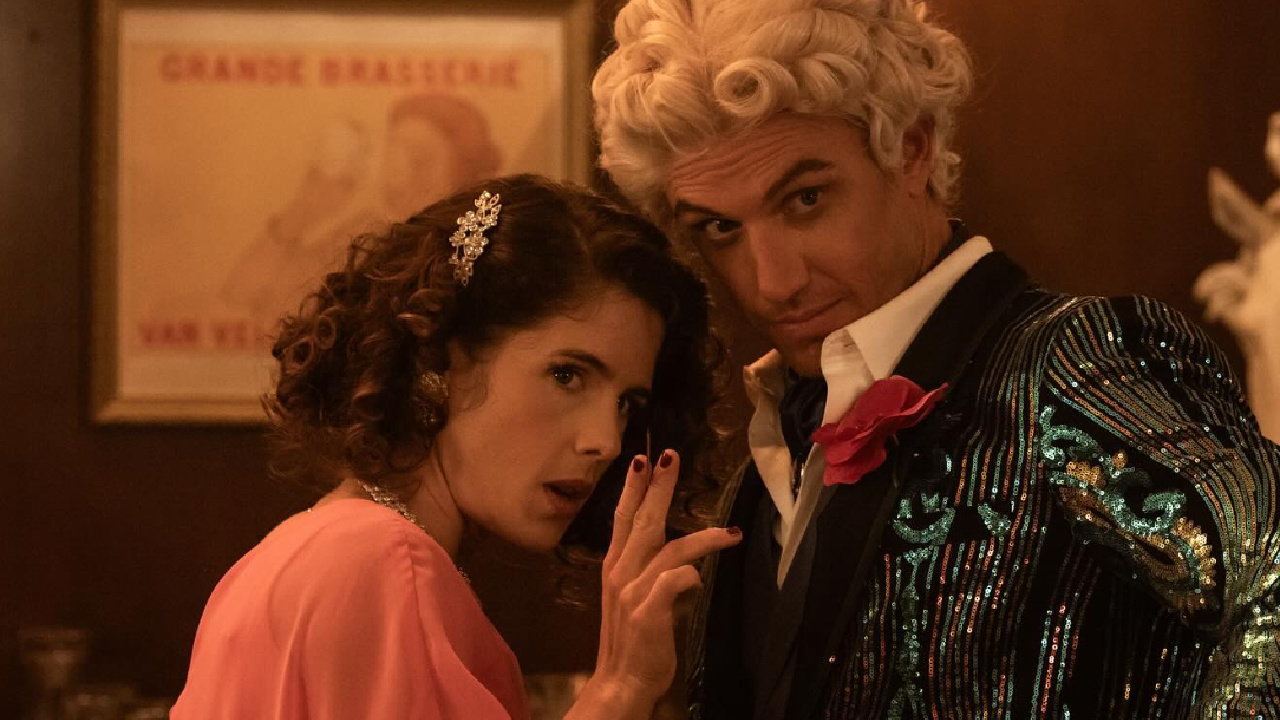
(Left) Emily Bett Rickards in 'Queen of the Ring'. Photo: Intrinsic Value Films & TV.
MF: Finally, Emily, if you were a professional wrestler, would you be a “Babyface” or a “Heel’?
EBR: I think I'd want to be a heel. Everyone says heels have more fun. I would have to say that I've had the experience of playing Mildred, so maybe I'll go for the heel next time around.
MF: Ash, which would you want to be?
AA:I mean, the best path, which really what started happening later in the 90s was that you become a heel, but you're so good at being a heel, that the audience starts to love you and you transform into a face. That's kind what happened with The Rock (Dwayne Johnson), Stone Cold (Steve Austin) and Macho Man (Randy Savage). He’s my personal favorite. Oh, (Rowdy Roddy) Piper is great, and ‘They Live’ is great. That movie was ahead of its time. I recommend everyone go see Roddy Piper in ‘They Live’. They need to re-release that movie. But heels do have more fun. It's easier to get someone to hate you than it is to love you.
Queen of the Ring
In a time when pro wrestling for women was illegal all over the country, a small town single mother embraces the danger to change culture as she dominates America's... Read the Plot
What is the plot of ‘Queen of the Ring’?
The film chronicles the life of revolutionary female wrestler, Mildred Burke.
Who is in the cast of ‘Queen of the Ring’?
- Emily Bett Rickards as Mildred Burke
- Josh Lucas as Billy Wolfe
- Kelli Berglund as Nell Stewart
- Walton Goggins as Jack Pfefer
- Deborah Ann Woll as Gladys Gillem
- Martin Kove as Al Haft
- Marie Avgeropoulos as Babe Gordon
- Gavin Casalegno as Joe Burke
- Kamille as June Byers
- Toni Storm as Clara Mortensen
- Trinity Fatu as Ethel Johnson
- Francesca Eastwood as Mae Young
- Cara Buono as Bertha
- Damaris Lewis as Babs Wingo
- Britt Baker as Debbie Nichols

(L to R) Emily Bett Rickards and Josh Lucas in 'Queen of the Ring'. Photo: Intrinsic Value Films & TV.
Other Emily Bett Rickards Movies and TV Shows:
- 'Arrow' (2012 - 2020)
- 'The Flash' (2014 - 2023)
- 'Supergirl' (2015 - 2021)
- 'Brooklyn' (2015)
- 'DC's Legends of Tomorrow' (2016 - 2022)
- 'Funny Story' (2018)
Buy Emily Bett Rickards Movies On Amazon

